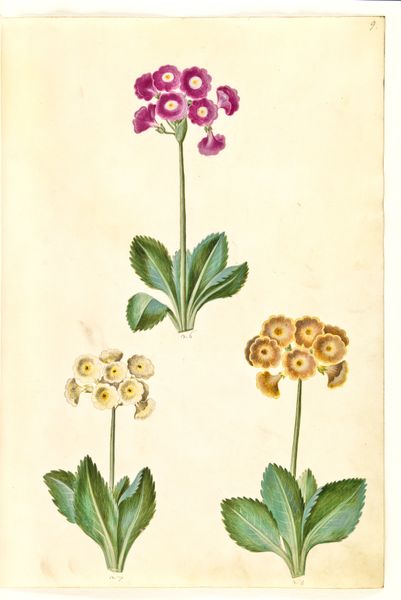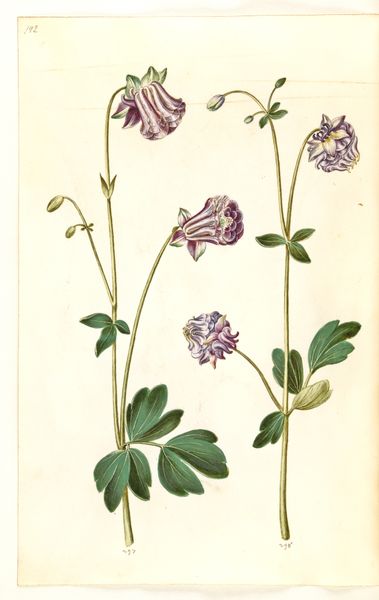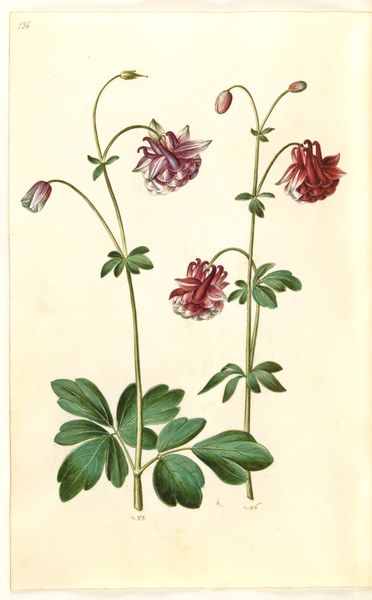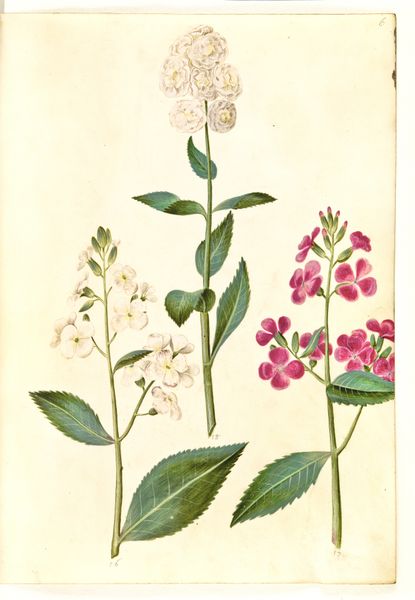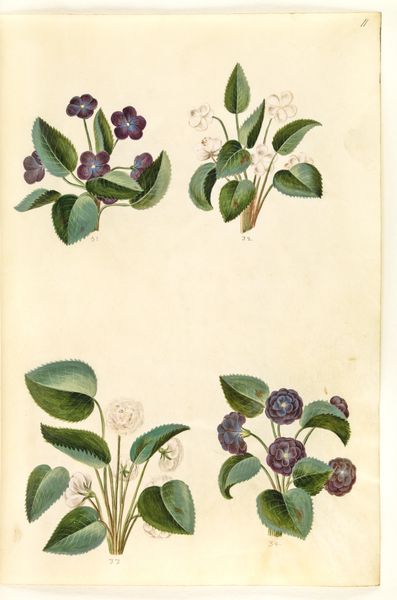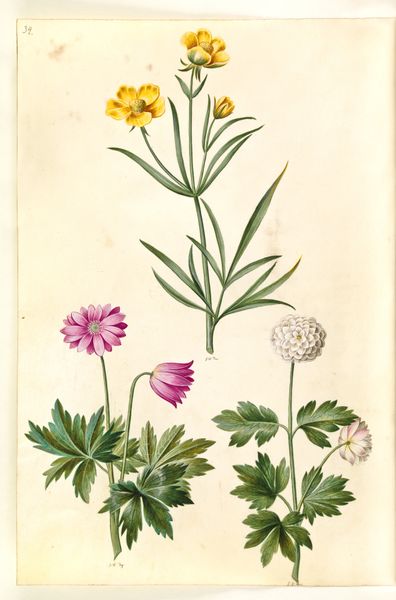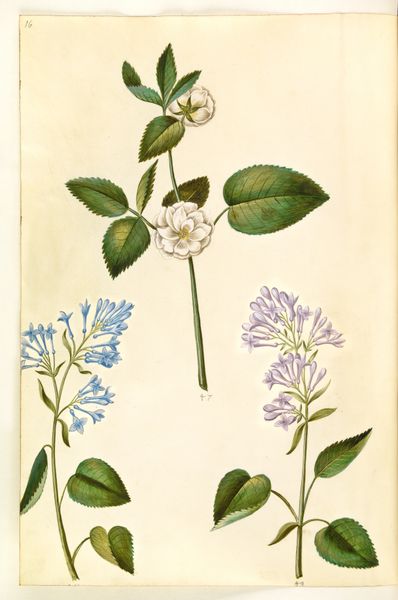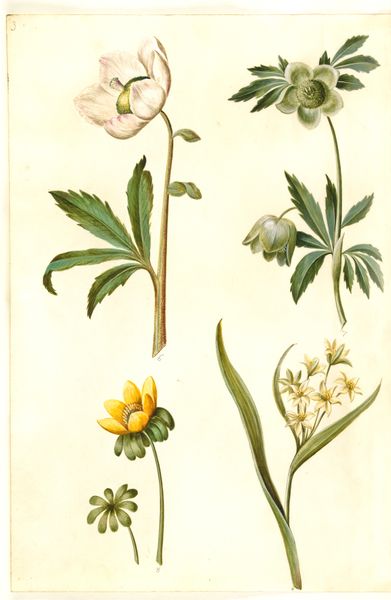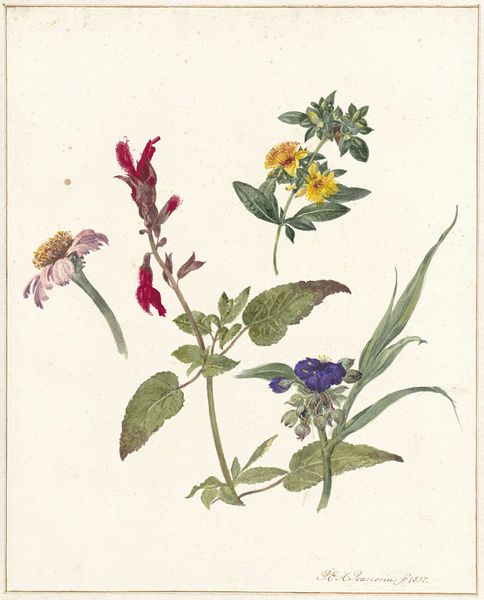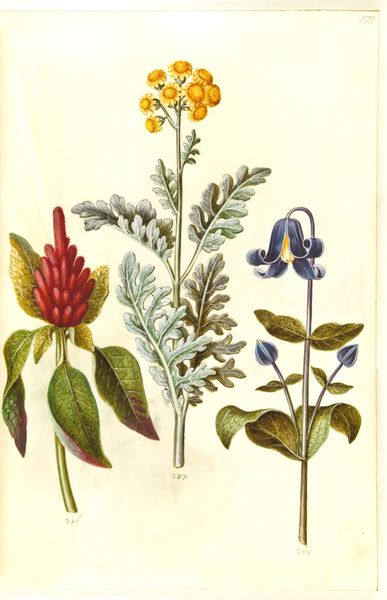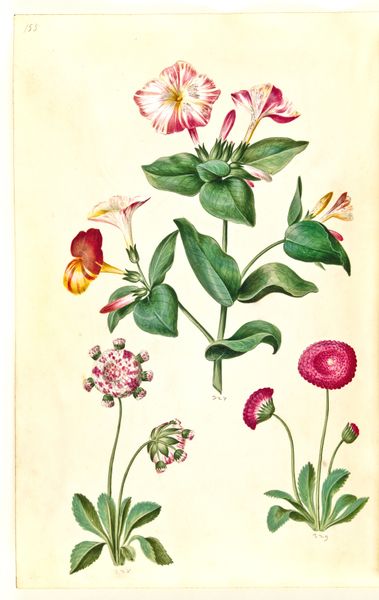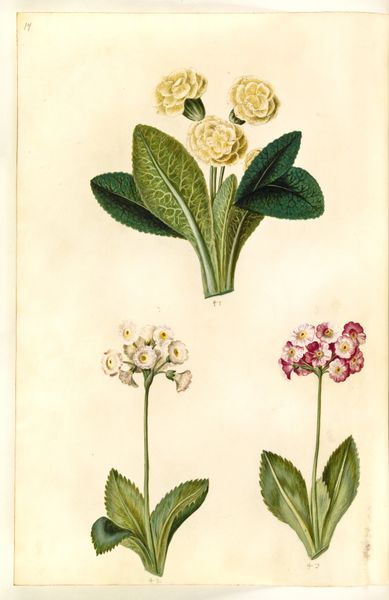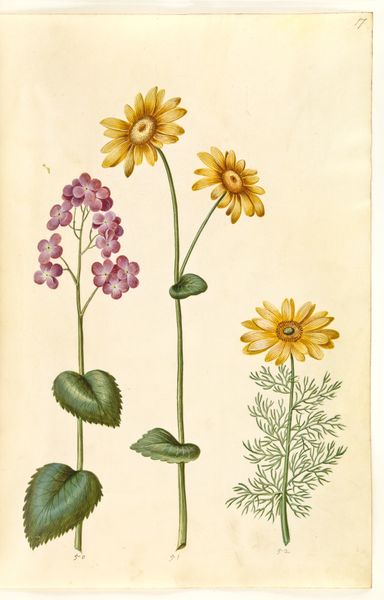
Primula veris (hulkravet kodriver); Caltha palustris (eng-kabbeleje); Corydalis cava (hulrodet lærkespore) 1635 - 1664
0:00
0:00
drawing, gouache, watercolor
#
drawing
#
gouache
#
watercolor
#
botanical art
#
watercolor
Dimensions: 375 mm (height) x 265 mm (width) x 85 mm (depth) (monteringsmaal), 358 mm (height) x 250 mm (width) (bladmaal)
Curator: Up next we have a rather enchanting botanical study by Hans Simon Holtzbecker, made sometime between 1635 and 1664. It's entitled, quite descriptively, "Primula veris (hulkravet kodriver); Caltha palustris (eng-kabbeleje); Corydalis cava (hulrodet laerkepore)." Editor: Well, my first impression is, it's wonderfully understated! There’s a fragility, almost a shyness to the rendering of these flowers. They look pressed, even though they’re vibrantly painted in watercolor and gouache. It's more suggestive of growth than declarative, which is refreshing. Curator: Precisely! It’s less about scientific documentation and more about capturing the fleeting beauty and spirit of each flower. Holtzbecker worked as a court painter, and his skills were often directed toward these sorts of botanical illustrations, perhaps for royal gardens or scientific study. Editor: Right, the royal gardens and botanical study makes sense. Thinking about access and class, too...Were these images created to give everyone knowledge and a sense of appreciation for nature, or exclusively to aid botanical studies amongst the wealthy? And how is knowledge about nature distributed through society? Are we doing that equitably today? Curator: I think it was much more aligned with a quest for knowledge than we give it credit for, but for a small portion of the population, for sure. What strikes me most is the texture Holtzbecker creates, especially with the leaves. You can almost feel the fuzziness of the Primula veris leaves. The rendering isn't hyperrealistic, but evocative of touch. Editor: The texture is lovely, and I find the flat white backdrop really makes the color palettes of each of these spring plants sing in their unique voices. It isolates the plants from any suggestion of ecosystem, giving them complete presence, which can make a plant visible even outside its blooming season, perhaps making that vision a form of immortality. The level of detail really demands close looking and inspires one to reflect on time and process. It’s really special. Curator: Absolutely, and these delicate gouache and watercolor renderings continue to offer inspiration, well beyond their initial context. It invites you into this almost secret world of observation, of quiet attentiveness to the details of nature. Editor: A moment suspended. Nicely put.
Comments
No comments
Be the first to comment and join the conversation on the ultimate creative platform.
